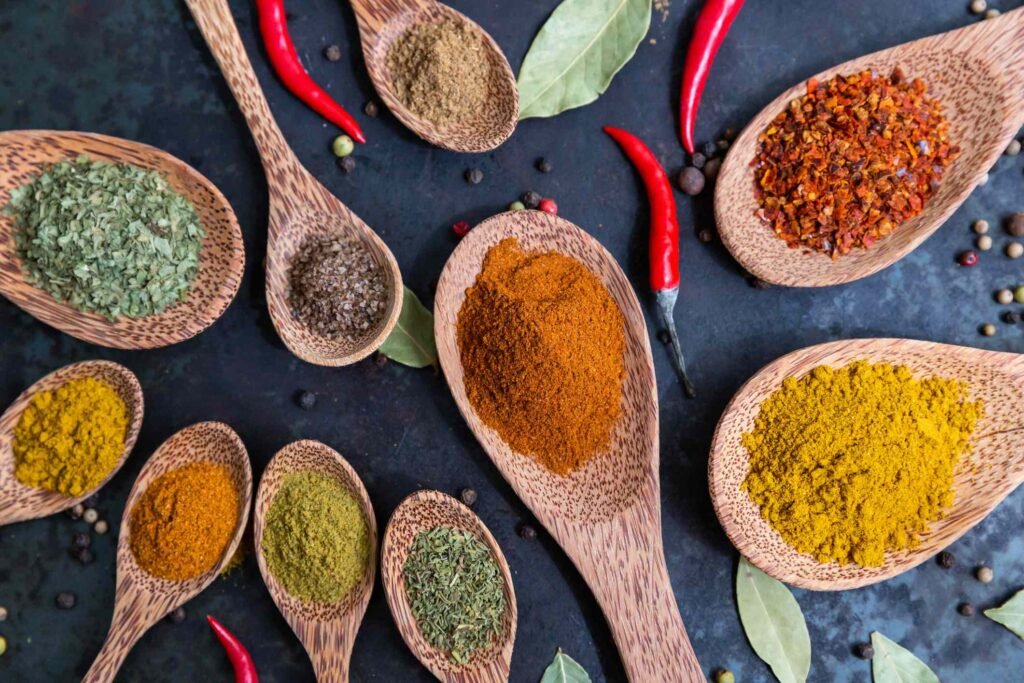When it comes to anti-inflammatory spices, turmeric often steals the spotlight, but it’s not the only spice with anti-inflammatory potential.
We asked experts to weigh in on the top inflammation-fighting spices that are worth keeping in your kitchen, and these are their top choices.
manusapon kasosod / Getty Images
Ginger is a popular spice that contains compounds that help reduce inflammation.
“Ginger inhibits pro-inflammatory chemicals and has been used for centuries to treat inflammatory conditions,” David Clarke, MD, president of the Association for the Treatment of Neuroplastic Symptoms, told Health.
Ginger’s potent anti-inflammatory properties come from unique phenolic compounds, including gingerols and shogaols. These compounds inhibit proinflammatory pathways in the body and decrease levels of inflammatory proteins. “These can help improve conditions like rheumatoid arthritis, osteoarthritis, migraines, and menstrual cramps,” Raj Dasgupta, MD, chief medical advisor for Sleepopolis, told Health.
How to use it: Dasgupta likes to add either fresh or dried ginger to recipes like stir-fries and soups and also enjoys fresh ginger in drinks like teas and smoothies.
Aleksandr Zubkov / Getty Images
Cardamom is known for its high concentration of anti-inflammatory compounds.
“This sweet and piney spice exhibits impressive anti-inflammatory effects and may help reduce several inflammatory markers in the body,” Kimberley Rose-Francis, RDN, CDCES, told Health.
Cardamom contains phenolic compounds and oils that have antioxidant and anti-inflammatory effects. Research findings suggest that cardamom may help lower inflammatory markers.
How to use it: Cardamom seeds can be ground and added to baked goods, sauces, and curries. Ground cardamom is also delicious in coffee and tea.
Credit:SGAPhoto / Getty Images
Cayenne pepper is high in capsaicin, a compound that’s responsible for its spicy flavor and anti-inflammatory properties.
“Cayenne Pepper is a double-punch anti-inflammatory spice,” Brooke Alpert, MS, RD, CDN, a culinary consultant for NOVOS Labs, told Health. “When eaten, it can help reduce the levels of inflammatory proteins in the body. It also works as a pain reliever when used in a topical form.”
Studies have shown that cayenne peppers may lower inflammatory responses in the body by reducing levels of inflammatory proteins and inhibiting the production of free radicals, which are unstable molecules that can damage tissues and trigger inflammation.
How to use it: For a spicy kick, sprinkle cayenne pepper on recipes like omelettes and hummus or mix it into baked goods.
Westend61 / Getty Images
Cinnamon is high in polyphenol compounds like cinnamaldehyde, which has powerful anti-inflammatory effects.
“Research suggests cinnamon may help protect brain health and lower the risk of Alzheimer’s disease,” Heather Gosnell, MD, board-certified pediatrician and certified plant-based health coach at Eat Plants MD Coach, told Health.
How to use it: Gosnell recommends adding cinnamon to oatmeal, smoothies, and baked goods for a delicious way to reduce inflammation.
brebca / Getty Images
Saffron is the most expensive spice in the world, but it may be worth the investment if you’re looking for a natural way to tame inflammation. “It contains crocin and safranal, both of which have been shown to help reduce inflammation and oxidative stress,” said Dasgupta.
Research shows that regularly consuming saffron and taking saffron supplements may help reduce markers of inflammation, such as C-reactive protein (CRP).
Saffron may also protect against inflammatory diseases, like inflammatory bowel disease (IBD), by inhibiting pro-inflammatory proteins and reducing oxidative stress, an imbalance of free radicals and antioxidants in the body.
How to use it: “A little goes a long way,” explained Dasgupta. Try adding saffron threads to soups, rice dishes, and drinks like lattes, or add a small amount of ground saffron to baked goods like cakes and muffins.
Brycia James / Getty Images
Cloves, which are commonly used in cooking and baking, pack an impressive amount of inflammation-fighting compounds. “Cloves have one of the highest polyphenol contents among spices,” said Gosnell.
Cloves are especially high in a polyphenol called eugenol, which has powerful anti-inflammatory and pain-relieving properties. “Think of it like nature’s version of ibuprofen,” explained Dasgupta.
How to use it: Dasgupta recommends adding ground cloves to baked goods and oatmeal or steeping cloves in hot water to make a warming, inflammation-fighting tea.
annabogush / Getty Images
“Black pepper contains piperine, which not only has anti-inflammatory properties of its own but also helps your body absorb other anti-inflammatory substances, like curcumin from turmeric, more effectively,” said Dasgupta.
Studies suggest that piperine inhibits inflammatory pathways and reduces levels of pro-inflammatory proteins, like TNF-α and IL-6.
Dasgupta suggests adding freshly ground black pepper to meals as a simple way to boost their anti-inflammatory potential.
Turmeric has strong anti-inflammatory properties, but it’s far from the only spice that offers these benefits.
Cinnamon, ginger, cayenne pepper, cardamom, saffron, cloves, and black pepper, all deserve a spot in your anti-inflammatory diet.

